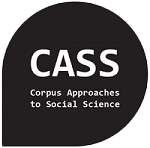A forthcoming special issue of Corpus Linguistics and Linguistics Theory, which is guest-edited by Dr Richard Xiao and Professor Naixing Wei, President of the Corpus Linguistics Society of China, is now available online as Ahead of Print at the journal website.
This special issue focuses on corpus-based translation and contrastive linguistic studies involving two genetically different languages, namely English and Chinese, which we believe have formed an important interface with its unique features as a result of the mutual interaction between the two languages.
Corpora have tremendously benefited translation and contrastive studies, and in the meantime, corpus-based translation and contrastive linguistic studies have also significantly expanded the scope of corpus linguistic research. While contrastive linguistics and translation studies have traditionally been accepted as two separate disciplines within applied linguistics, there are many contact points between the two; and with the common corpus-based approach and the usually shared type of data (e.g. comparable and parallel corpora), corpus-based translation and contrastive linguistic studies have become even more closely interconnected, as demonstrated by the articles included in this special issue.
This special issue of Corpus Linguistics and Linguistics Theory includes five research articles together with an extensive introduction written by the guest editors.
- Translation and contrastive linguistic studies at the interface of English and Chinese: Significance and implications, by Richard Xiao and Naixing Wei
- Lexical and grammatical properties of Translational Chinese: Translation universal hypotheses reevaluated from the Chinese perspective, By Richard Xiao and Guangrong Dai
- What is peculiar to translational Mandarin Chinese? A corpus-based study of Chinese constructions’ load capacity, by Kefei Wang and Hongwu Qin
- Structural and semantic non-correspondences between Chinese splittable compounds and their English translations: A Chinese-English parallel corpus-based study, by Jiajin Xu and Xiaochen Li
- Exploring semantic preference and semantic prosody across English and Chinese: Their roles for cross-linguistic equivalence, by Naixing Wei and Xiaohong Li
- A corpus-based variationist approach to bei passives in Mandarin Chinese, by Hongjie Guo and Daryl Chow
These studies combine contrastive analysis and translation studies on the basis of comparable corpora (either multilingual or monolingual) and parallel corpora of English and Chinese, two most widely spoken world languages that differ genetically. While the decision to involve English and Chinese in the research reported in this volume was largely based on the authors’ strong languages (they are all competently bilingual in Chinese and English), the significance of the typological distance between the two languages covered in these studies cannot be underestimated. In comparison with studies of typologically related languages, translation and cross-linguistic studies of genetically distant languages such as English and Chinese can have more important theoretical implications for linguistic theorization. Studying such language pairs help us gain a better appreciation of the scale of variability in the human language system while theories and observations based on closely related language pairs can give rise to conclusions which seem certain but which, when studied in the context of a language pair such as English and Chinese, become not merely problematized afresh, but significantly more challenging to resolve (cf. Xiao and McEnery 2010).
Studies reported on in this special issue embody features at the interface of English and Chinese, which can be expected to have important significance and practical implications for linguistic theorizing.
